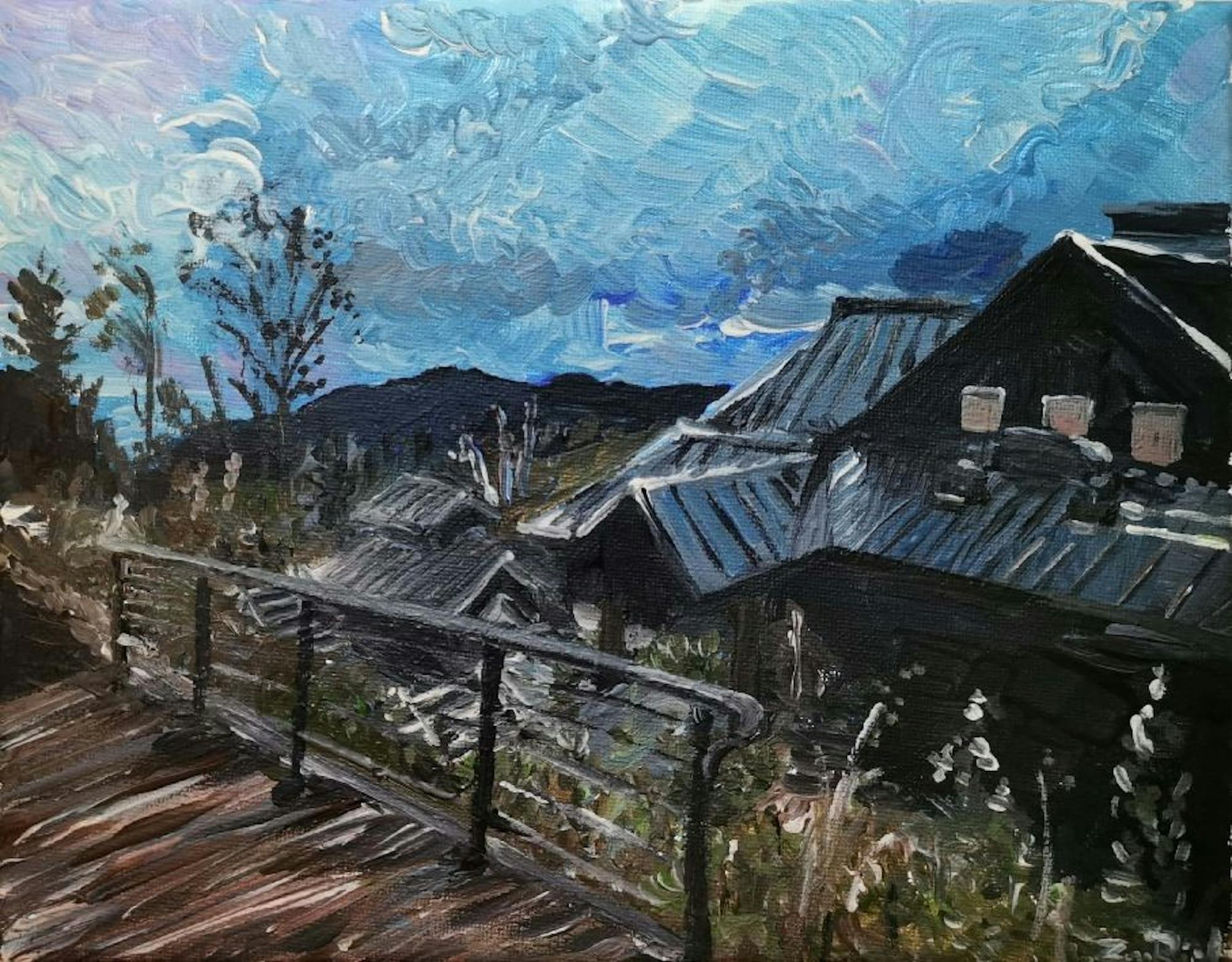This article is featured in the 2022 Winter Carnival special issue.
Ice skating on the Green and Occom Pond, fire pits on Massachusetts Row, free Nordic skiing at the golf course — though a bit later than last winter, Dartmouth has offered a cornucopia of ways to be outside this term. I can’t help but notice, however, all the other support that could have been offered. Sure, the fire pits are nice — but in my experience, they hardly generate any warmth, nor do they offer shelter from the wind. And despite the good intentions of wanting to limit COVID-19, this infusion of outdoor support only during the pandemic makes it seem that all this support may, like the snow banks on every corner, melt away as soon as the virus is a lesser threat.
What we should have instead is a permanent and robust College effort to support casual ways to be outside in all seasons. Sure, the Dartmouth Outing Club (in which I am an active member) already offers a variety of activities, such as hiking, climbing and paddling. But while these activities are rewarding, I find we often lack the easiest way to be outdoors: just living our normal lives — talking, eating, studying and exercising — outside.
Last winter, the College marketed a “winter wonderland” of outdoor activities after fall term was criticized for its stringent COVID-19 regulations and lack of ways for students to socialize. We saw the appearance of the ice skating rink on the Green and free passes for cross-country skiing. The outdoor fire pits dotted campus — and were often the best way to eat a meal with friends, given the awkward nature of social distancing inside Foco. Throughout the rest of the year, tents were put up across campus and, in addition to becoming social spaces, also saw some novel use in the summer as outdoor classrooms.
Given the mental and physical health benefits of time spent outdoors, these amenities should not be limited to the pandemic; they should be around-the-clock offerings by the College. It may seem obvious to some, but time spent outside — regardless of physical activity done — has a tremendous positive impact. Spending more time outside can lower blood pressure, reduce anxiety, increase life satisfaction, enhance sleep, and improve academic performance. There’s even some evidence to suggest that natural environments help patients recover from surgery more quickly.
But does a school with such an outdoorsy reputation really need to be facilitating more time outside? After all, just tour campus during sophomore summer, and you’ll see students swimming in the river, sunbathing and playing spikeball on the Green. Yes: There is still room for improvement. For instance, this summer, I noticed many great outdoor spaces — such as the farmer’s market and Montshire Trails in Norwich — were far more accessible to those with a car, given the lack of a sidewalk to those areas. And moreover, we can do more to make things pleasant outside of summer.
First, keep up existing changes like the ice rink and free cross-country skiing. If the College wants to be more generous with its money, increasing the number of free alpine ski days would be a logical place to start.
In terms of infrastructure, some changes to the landscape of this school could go a long way. Focusing just on campus — on the lawns, plazas, and other open spaces which surround Baker tower — I envision a few key changes. We can have open air structures to withstand the elements and allow outdoor time with protection from rain and wind. Think a gazebo or pavilion of some kind, with heaters for colder months. If we really wanted to get creative, these structures themselves could be highly natural, incorporating vines or trees: Just look at the outdoor classroom spaces premiered at Harvard University’s Arnold Arboretum, complete with vine trellises. These spaces would make it easier to study and eat outdoors in all seasons. The College could also put up mini-arboretums around campus, replacing some of the smaller lawns and concrete areas on campus. Imagine a small grove of trees surrounding a table or group of tables — say, on one of the lawns in front of the LSC. I know I would love to spend time there just eating or doing work.
Finally, making the woods and trails which surround us more accessible would be a great step. For a campus that prides itself on its access to the outdoors, it is surprisingly difficult to get a taste of the forest that surrounds us. This is especially true during winter, when Pine Park and other trails go unplowed. Much like we maintain sidewalks and paths along the Green, we should better maintain some easy forest walks to ensure they can be open during the winter. Having better sidewalks and signage to indicate where popular trails are could further the effect of a campus enmeshed in the surrounding woods and hills.
Regardless of what actually ends up being implemented, the point remains that a newfound focus on promoting casual, relaxed outdoor time could benefit this community immensely. No single plan could totally revolutionize the way we spend our time in nature, and, in the end, may only result in a little more time or a few more students enjoying themselves outdoors. Yet when the benefits of outdoor experiences are so manifest, from both anecdotal and scientific evidence, it is only right to make them a little easier.
Max Teszler is the vice president of the Dartmouth Outing Club.


